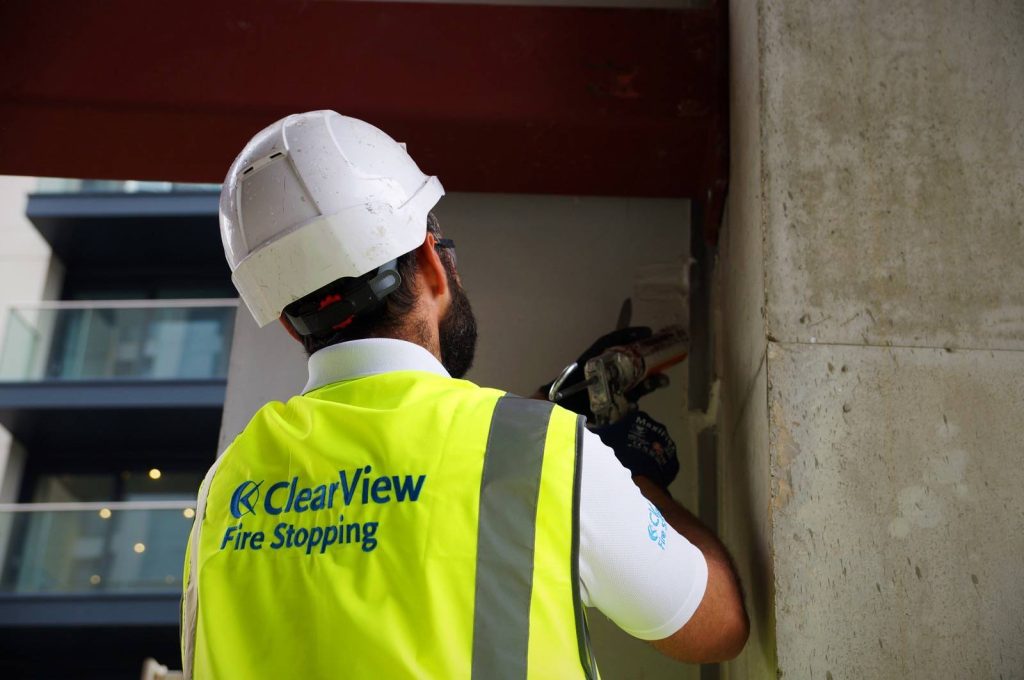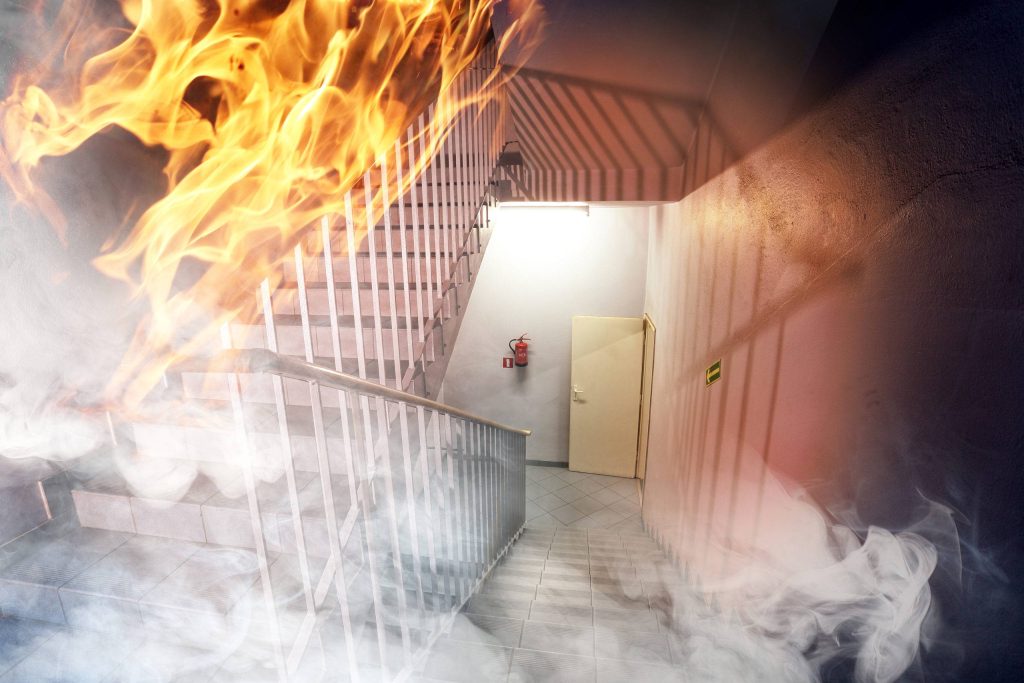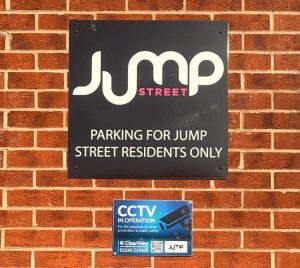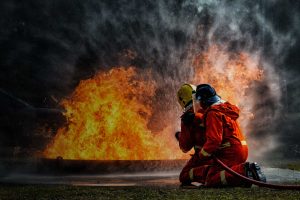Information correct as of 17.03.2023
Fire Stopping Regulations
Fire stopping regulations in the UK are in place, so the fire safety standards for passive fire protection and fire compartmentation can be followed to achieve compliance.
uk fire stopping regulations
ClearView operates under Passive Fire Protection and Fire Stopping regulations to ensure that our work is fully compliant. We are UKAS certified by the International Fire Consultants, who audit our installation work a minimum of 4 times per year.
Requirements for Passive Fire Protection Compliance
The aim of passive fire protection is to provide protection from fire and smoke for a clearly specified period of time such as 60 minutes. This is dependant on the unique requirements of the building(s).
To achieve compliance with UK passive fire protection regulations, all installation products must comply with fire resistance ratings in accordance with British standards.
Why Fire Stopping is Required
Fire stopping is required to control the spread of fire through the use of fire-rated compartmentation of a building. Although without adequate fire stopping materials in place, fire and smoke can quickly travel through a building, causing serious damage to property and risk to life. It is also vital to protect fire rescue personnel. Therefore, compartmentation is usually required for floors, walls, and ceilings to ensure that the integrity of the rating is maintained.
Suppose cables or pipes breach fire-resisting elements. In that case, gaps must be sealed to ensure that the penetrations do not cause a decrease in the integrity of the resisting material. Further examples can be caused by ventilation or heating and cooling systems, conduit, and ducts.
Approved document B states that all fire-rated elements must be reinstated once penetrated by any of the above examples. The standard also states that these penetrations should be kept to a minimum, as small as possible and fire stopped. Furthermore, all joints that are between fire separating elements must be fire stopped.
Fire Stopping in Construction
The Principal Designer under The Construction (Design Management) Regulations 2015 holds the responsibility for ensuring that all fire-stopping products meet the performance requirements of building regulations. This responsibility is only handed over to the Principal Contractor when the construction phase commences. The rules for other passive fire protection elements such as fire doors are covered here: Fire Door Regulations
The type and quantity of compliant penetration seals must also be considered part of the mechanical and electrical (M&E) strategy. This includes leaving adequate access for the installation and maintenance of services and penetration seals.
Testing of Penetration Seals
Penetration Seals testing standards are set in BS EN 1366 Fire resistance Tests for Service Installations. The standard determines the method for ascertaining the fire resistance of horizontal and vertical ventilation ducts. Also included are the methods and test criteria for pipes and cable penetration seal resistances of fire separating elements.
The common types of penetrations that may require fire stopping are listed below:
- Fire and smoke dampers
- Insulated pipes
- Cable trays
- Trunking
- Busbars
- Combustible pipes
- Loose cables
Building Regulations 2019
The Building Regulations 2019, Fire Safety, Approved Document B – Requirement B3, Internal Fire Spread (structure) state “The building shall be designed and constructed so that, in the event of a fire, its stability will be maintained for a reasonable period.”
“The building shall be designed and constructed so that unseen fire and smoke within concealed spaces in its structure and fabric is inhibited.”
Approved Document B 2019 Volume 1 ‘Dwellings’, Section 9 sets out the requirements for fire stopping and states that openings through a fire-resisting element for pipes, ducts, conduits or cable should be as few and small as possible and fire stopped.
Approved Document BRegulatory Reform (Fire Safety) Order 2005
Regulatory Reform (Fire Safety) Order 2005 applies to almost all buildings and structures; however, it is not applied to private homes.
“You are responsible under the Act if you are an Employer, Landlord, Owner, Occupier, or anyone else in control of the premises such as a Facilities Manager.”
“As the responsible person, you must:
- carry out a fire risk assessment of the premises and review it regularly
- tell staff or their representatives about the risks you’ve identified
- put in place, and maintain appropriate fire safety measures
- plan for an emergency
- provide staff information, fire safety instruction and training.”
BS 7671:2018 – Sealing of Wiring Installations
BS 7671:2018 Regulation 527.2 sets out the requirements for the sealing of wiring system penetrations, Regulation 527.2.1 states that:
“Where a wiring system passes through elements of building construction such as floors, walls, roofs, ceilings, partitions or cavity barriers, the openings remaining after passage of the wiring system shall be sealed according to the degree of fire-resistance (if any) prescribed for the respective element of building construction before penetration.”
Whilst BS 7671:2018 states that fire stopping is a requirement, it does not detail how it should be carried out or who should do it. For this, it is important to seek further guidance from specialist contractors and manufacturers such as ClearView.

Who is Responsible for Carrying Out the Fire Stopping Works?
BS 7671:2018 imposes requirements on the electrical installer to ensure penetrations for wiring systems are sealed to prevent the spread of fire. However, the electrical designer may decide to employ a specialist contractor to carry out the works.
On smaller projects, the electrical installer will likely be the only person involved in the works, so it will be their responsibility to ensure that the fire stopping works are completed adequately.
On larger projects, it can sometimes be assumed that the fire stopping will be carried out by the main contractor, but this is not always the case. It is important to establish where the responsibility lies at an early stage, such as when tendering for a project. The architect will likely be responsible for specifying fire stopping works, but this should be clarified with the principal contractor during the tender process.

Responsibility for Compliance
People who are responsible for building work (e.g. agent, designer, builder or installer) must ensure that the work complies with all applicable requirements of the Building Regulations.
The building owner may also be responsible for ensuring that work complies with the Building Regulations. If building work does not comply with the Building Regulations, the building owner may be served with an enforcement notice.





















